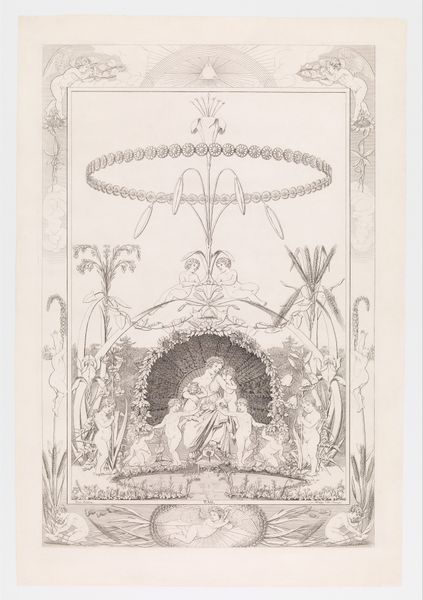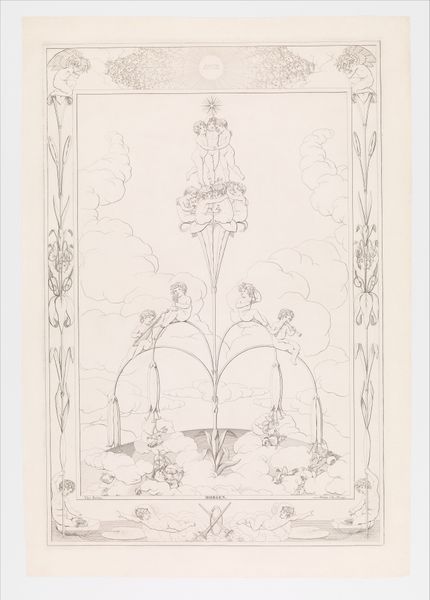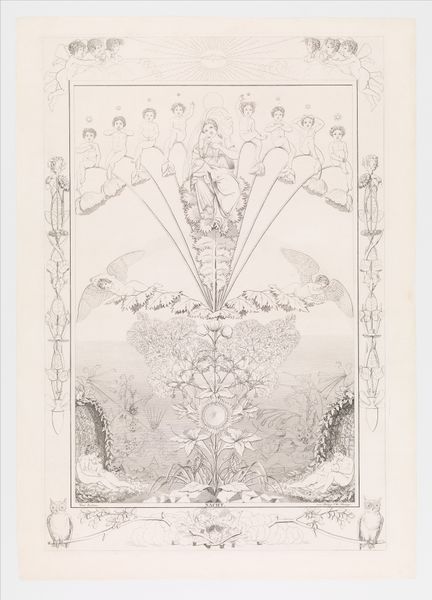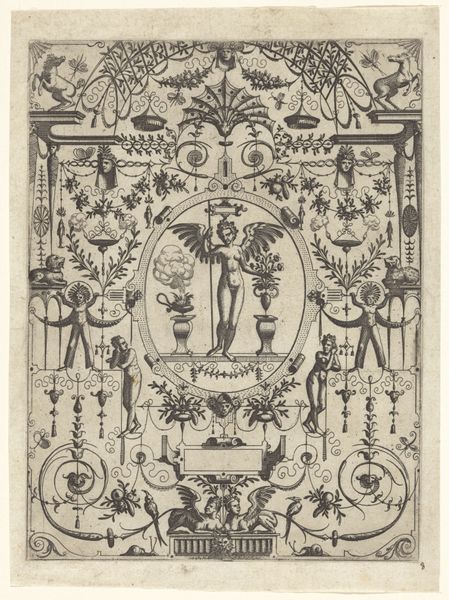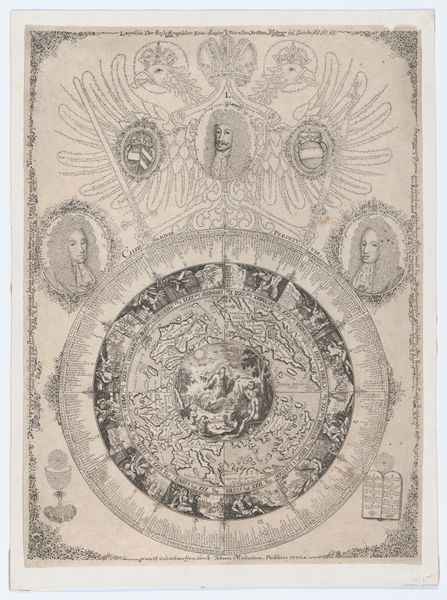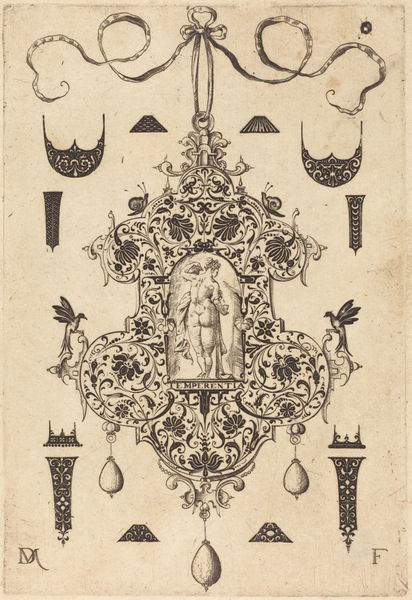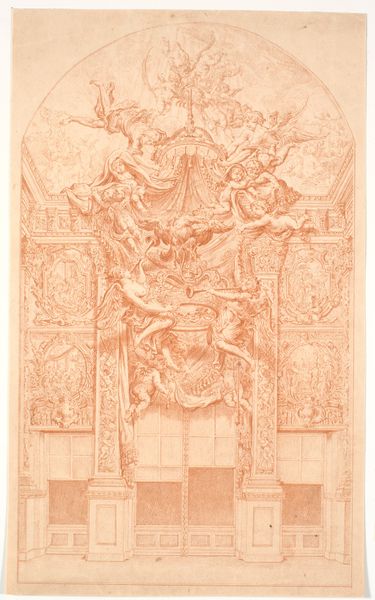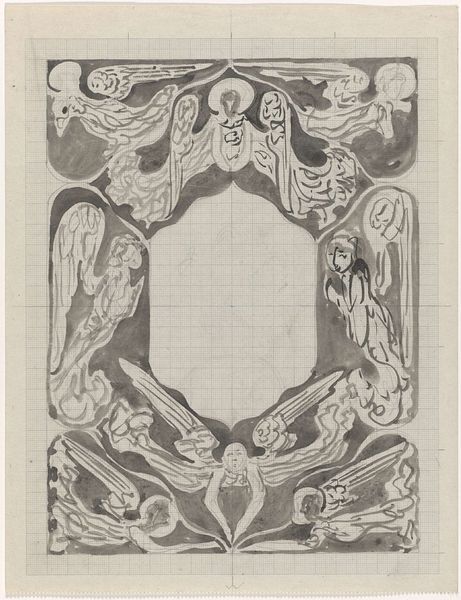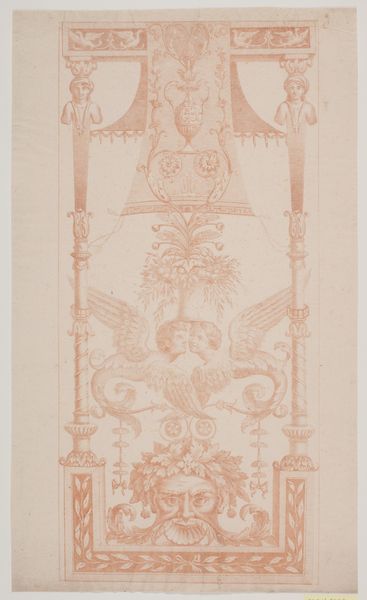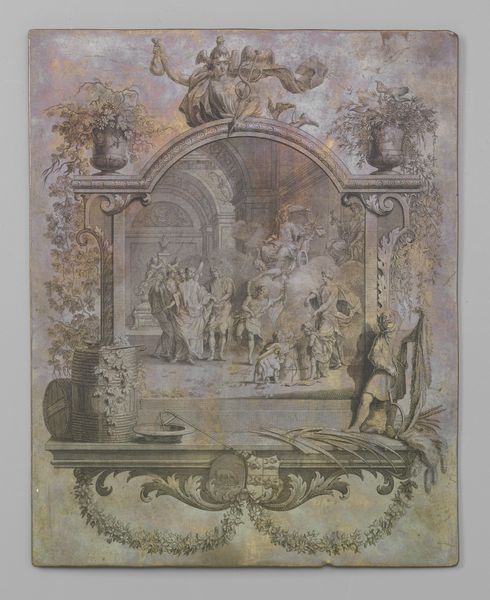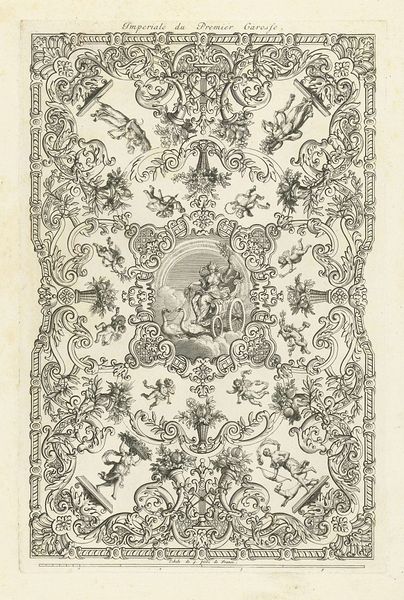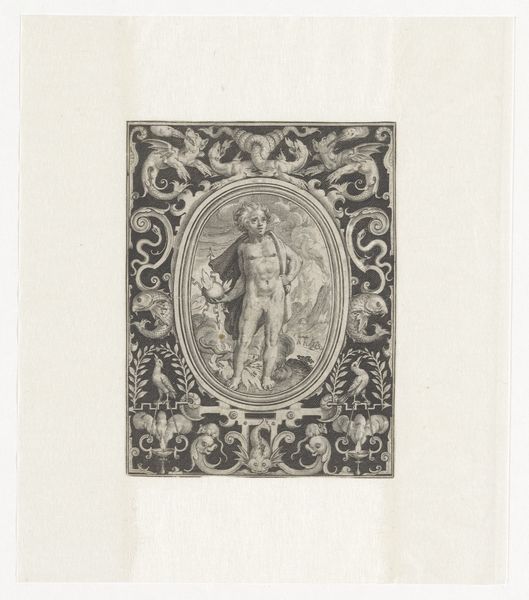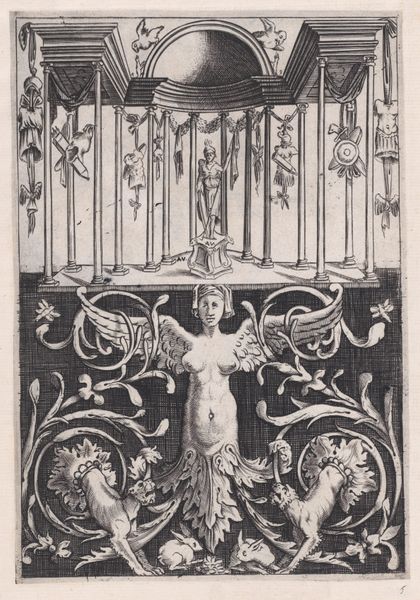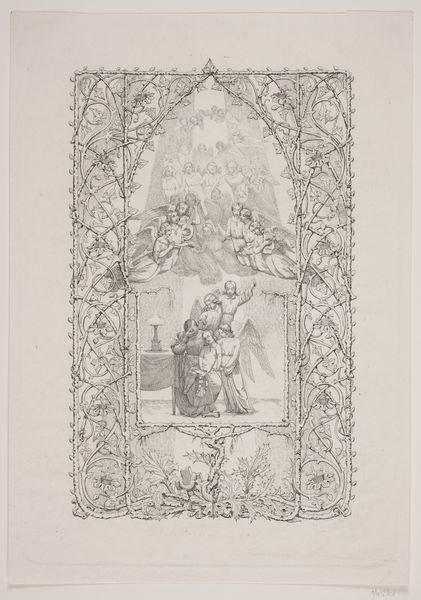
Evening, from the series The Times of the Day 1807
0:00
0:00
drawing, print, etching
#
drawing
#
allegory
# print
#
etching
#
etching
#
figuration
#
romanticism
#
pen work
Dimensions: sheet: 31 1/8 x 21 3/4 in. (79 x 55.2 cm) plate: 27 15/16 x 18 5/8 in. (71 x 47.3 cm)
Copyright: Public Domain
Curator: At first glance, there's an ethereal quality to this piece. It reminds me of illuminated manuscripts or even early visionary art. What are we looking at, exactly? Editor: This is "Evening, from the series The Times of the Day," an etching dating to 1807, crafted by Philipp Otto Runge. It's currently part of the collection at the Metropolitan Museum of Art. Curator: Ah, Runge. It's a Romantic work, for sure. All these cherubs, and a central female figure. The lines are so delicate. Is it meant to be read as an allegory? Editor: Indeed. It functions on an allegorical level. You can see how Runge integrates Christian iconography into his own personal mythology, playing with the symbolic weight of images like the Madonna, rendering the human body and the arcadian setting with this delicate line work that feels ancient, primal. Curator: There's almost an architectural structure suggested with the vines and the groupings of figures – is it designed to show that harmony is only found when nature is brought into concord with civilization? Editor: It’s fascinating how he organizes the composition into these distinct registers. Each zone brims with activity, while remaining part of a unified whole, mirroring that sense of evening as a time of transition, of moving between the waking world and the world of dreams, both terrestrial and celestial. The influence of earlier emblem books is strong here; images meant to distill morals into singular forms. Curator: It's clear that his choice of the etching technique enhances that feeling of delicacy. Did the public have access to pieces like this? How were these kinds of prints distributed at the time? Editor: Prints such as this one circulated within artistic and intellectual circles. They functioned as a vital form of visual communication, offering artists a chance to disseminate their ideas widely while establishing common aesthetic vocabularies. Collecting prints was also fashionable. Curator: Understanding the context sheds light on this print's cultural value. It bridges artistic styles and symbolizes the spiritual interests of its age, inviting reflection. Editor: Agreed. Delving into this reveals just how multi-faceted art can be, weaving together personal vision, symbolic language, and broad cultural movements in fascinating ways.
Comments
No comments
Be the first to comment and join the conversation on the ultimate creative platform.
